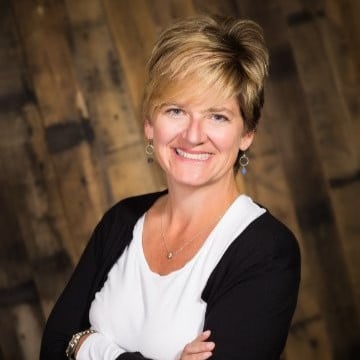Editor’s note: This is the first of a two-part series related to coronavirus around remote employee engagement and priorities for HR leaders–from HR’s top experts.
*
Pat Wadors was roughly two-thirds through her tenure as senior vice president of global talent at Sunnyvale, Calif.-based LinkedIn when she was invited to participate in a panel discussion on diversity at a Professional Business Women’s Conference in 2016. An admitted introvert, Wadors was understandably nervous about speaking in front of a roomful of peers, but she would be up there with several other people, so how bad could it be? Two weeks before the event, however, the moderator called to ask Wadors to deliver some introductory remarks about her feelings on the progress made within diversity and inclusion space. With trepidation, she promised to give it some thought.

That night, Wadors tossed and turned, as she became aware that diversity and inclusion “hadn’t grabbed [her] heart.” Around 3 in the morning, she recalls, she had the realization that “D&I is necessary, but not sufficient.” Rather, it’s an “intellectual argument”–not about “the heart and the humanity of it.” Wadors found her mind wandering back to childhood experiences on the Little League field when, as the only girl on the team, she was made to feel like she didn’t belong. Her teammates stole her mitt, taunted her and excluded her from post-game pizza parties. Determined to fit in, Wadors practiced even harder, increasing her strength and skills. Several weeks later, she made a game-winning out against a particularly tough adversary. At that moment, everything changed, as her teammates began viewing her not merely as a girl whose presence was unwanted, but as a valued member of the team. It was then, standing on a Little League field at the age of 10–Wadors recognized more than three decades later–that she experienced her first belonging moment.
Wadors spent the next two hours “riffing” in her head about the moments when she didn’t belong and when she did. That, she discovered, was what grabbed her heart. Excited by her realization that belonging was the missing component in the D&I space, Wadors dove into research and learned that humans are “genetically wired to belong.” She began formulating her first presentation on what she called DIBS, an acronym for diversity, inclusion and belonging. She consulted a variety of reference books for the meaning of the word, but it was the Urban Dictionary’s definition of DIBS as “the most powerful force in the universe” that got Wadors so excited; her squealing actually brought LinkedIn’s CEO Jeff Weiner running to her office to find out what was going on.
Read more from 2019 HR Tech Influencer Pat Wadors.
“When someone is different and insecure and they get to be authentic and are welcomed in a team, we can unlock their super powers and bring out the best–not only in that person, but the team and, therefore, the product, the service, the company, the world,” says Wadors. “If I could tap into that and create belonging moments and unlock that in others, we could create an amazing culture.”
Over the past four years, the importance of fostering a sense of belonging has been embraced by a growing number of companies, particularly those in the tech industry, where titles, programs and functions incorporating diversity, inclusion and belonging are becoming increasingly commonplace. And as organizations begin to strategize back-to-work plans for a post-pandemic work environment, centering concepts like belonging could provide a roadmap for ensuring workers feel both physically and psychologically safe.
Read all of HRE‘s coronavirus coverage here.
While critics may be quick to dismiss belonging as yet another touchy-feely buzzword–and some may suggest it is already implicitly covered by inclusion–belonging is a necessary addition to the D&I space, according to Stephanie Creary, assistant professor of management at the Wharton School at the University of Pennsylvania.
“Many companies have initiatives in place to create inclusion from a behavioral perspective–including people in meetings, in different events, giving them a seat at the table–but merely including someone doesn’t mean you are automatically going to get this positive emotional experience of feeling connected to this workplace, this team, this organization,” says Creary. “Belonging is that sense of inclusion, where people feel ‘This is a place where I fit in and am accepted for who I am.’ ”
While inclusion can seem somewhat vague or ambiguous, belonging is easy for employees to understand because it’s a universal concept to which everyone can relate, according to Laura Sherbin, managing director of New York-based Culture@Work. “Belonging is a very common term that a lot of people can identify with because everyone at their core feels the need to belong,” she says.
In her first year as vice president of diversity, inclusion and belonging at San Leandro, Calif.-based Indeed.com, LaFawn Davis has experienced that firsthand, as she’s traveled the world, holding Ask Me Anything events–and explaining the company’s priorities and goals related to DIBS–at each of its global offices.
While belonging instantly resonates with employees, Sherbin says, senior leaders often struggle to understand what it means in a corporate setting, primarily because they consider the feeling as coming from inside an individual, rather than something that can be instilled by those around them.
“It’s a hard concept for them to grasp because everybody knows what makes them feel like they belong, but what might make someone feel like they belong is incredibly individually specific,” says Sherbin. “Senior leaders are held accountable for creating environments in which their workers can thrive, but when you ask them what they could do to help someone feel like they belong, that can be a very difficult question to ask.”
*
For more on how HR can support and increase belonging, check back soon.

